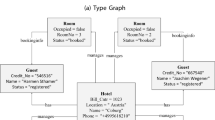Abstract
The widespread recognition of graph theory's benefits in software engineering, particularly for software testing, is well-established. Its potential is equally significant in the medical field, where software quality profoundly influences patient safety and healthcare outcomes. This paper presents a comparative analysis of research papers investigating graph theory's application to enhance software testing in medical contexts. The study commences with an introduction to fundamental graph theory and software testing concepts. It delves into comparative research encompassing objectives, methodologies, and outcomes, identifying gaps and limitations in existing literature while suggesting future research directions. The study demonstrates graph theory's versatile application in medical software testing, including test case generation, test coverage analysis, and fault detection. Most studies emphasize graph-based algorithms for test case generation, where software code is represented as a graph, and diverse traversal algorithms generate test cases for distinct code sections. Some studies explore graph-based metrics for test coverage analysis, quantifying software code and test cases as interrelated graphs, utilizing various metrics to gauge testing effectiveness. A subset of studies investigates graph-based techniques for fault detection, utilizing graph algorithms to identify defects in code. Despite progress, limitations persist in graph modeling standardization, analysis techniques, and case study scope. Future research directions recommended include standardized graph modeling, broader case studies, and comparative evaluations of graph-based algorithms and metrics. In conclusion, this study highlights graph theory's potential to enhance medical software testing, offering valuable insights for practitioners and researchers. Its findings inform future research and contribute to more effective and efficient software testing methodologies for medical applications.
Access this chapter
Tax calculation will be finalised at checkout
Purchases are for personal use only
Similar content being viewed by others
References
Diestel, R., Schrijver, A., Seymour, P.: Graph theory. Oberwolfach Reports 7(1), 521–580 (2010)
Everett, G.D., McLeod Jr, R.: Software testing. Testing Across the Entire (2007)
Thimbleby, H.: Technology and the future of healthcare. J. Public Health Res. 2(3), jphr- 2013 (2013)
Stojanovic, Z., Dahanayake, A. (eds.) Service-oriented software system engineering: challenges and practices (2005)
Brookshear, J.G.: Computer science: An overview. Benjamin-Cummings Publishing Co., Inc. (1991)
Novikov, D.S., Kiselev, V.G., Jespersen, S.N.: On modeling. Magnetic Resonance Med. 79(6), 3172–3193 (2018)
Rothermel, G., Untch, R.H., Chu, C., Harrold, M.J.: Prioritizing test cases for regression testing. IEEE Trans. Software Eng. 27(10), 929–948 (2001)
Brélaz, D.: New methods to color the vertices of a graph. Commun. ACM. ACM 22(4), 251–256 (1979)
Zhang, P., Chartrand, G.: Introduction to graph theory. Tata McGraw-Hill (2006)
Wang, D., Zhao, Y.: Single-atom engineering of metal-organic frameworks toward healthcare. Chem, 7(10), 2635–2671 (2021). van der Putten, B. C., Mendes, C. I., Talbot, B. M., de Korne-Elenbaas, J., Mamede
R., Vila-Cerqueira, P., ... & ASM NGS 2020 Hackathon participants. (2022). Software testing in microbial bioinformatics: a call to action. Microbial Genomics 8(3), 000790
Russell, S., Bennett, T.D., Ghosh, D.: Software engineering principles to improve quality and performance of R software. PeerJ Comput. Sci. 5, e175 (2019)
Yuba, M., Iwasaki, K.: Systematic analysis of the test design and performance of AI/ML-based medical devices approved for triage/detection/diagnosis in the USA and Japan. Sci. Rep. 12(1), 16874 (2022)
Usman, O.A., Oshiro, C., Chambers, J.G., Tu, S.W., Martins, S., Robinson, A., Goldstein, M.K.: Selecting test cases from the electronic health record for software testing of knowledge-based clinical decision support systems. In: AMIA Annual Symposium Proceedings, vol. 2018, p. 1046. American Medical Informatics Association (2018)
Wright, A., Aaron, S., Sittig, D.F.: Testing electronic health records in the “production” environment: an essential step in the journey to a safe and effective health care system. J. Am. Med. Inform. Assoc. 24(1), 188–192 (2017)
Williamson, D.P.: Network flow algorithms. Cambridge University Press (2019)
Haslegrave, J., Hu, J., Kim, J., Liu, H., Luan, B., Wang, G.: Crux and long cycles in graphs. SIAM J. Discret. Math.Discret. Math. 36(4), 2942–2958 (2022)
Liu, W., Sidhu, A., Beacom, A.M., Valente, T.W.: Social network theory. The international encyclopedia of media effects, 1–12 (2017)
Mortimer, J.C.: Plant synthetic biology could drive a revolution in biofuels and medicine. Exp. Biol. Med. 244(4), 323–331 (2019)
Guerrero-Ibáñez, J., Zeadally, S., Contreras-Castillo, J.: Sensor technologies for intelligent transportation systems. Sensors 18(4), 1212 (2018)
Abbaoui, W., Retal, S., Kharmoum, N., Ziti, S.: Machine learning for diabetes prediction: artificial intelligence at the service of precision medicine. In: 4th Edition of the International Conference on Advanced Intelligent Systems for Sustainable Development, AI2SD 2022, Rabat, Morocco (2022). https://doi.org/10.1007/978-3-031-35248-5_9
Retal, S., Sahbani, H., Kharmoum, N., Rhalem,W., Ezziyani, M.: Machine learning for diabetes prediction: a systematic review and a conceptual framework for early prediction. In: 4th Edition of the International Conference on Advanced Intelligent Systems for Sustainable Development, AI2SD 2022, Rabat, Morocco (2022). https://doi.org/10.1007/978-3-031-35248-5_7
Kharmoum, N., et al.: Agile user stories’ driven method: a novel users stories meta-model in the MDA approach. In: Kacprzyk, J., Ezziyyani, M., Balas, V.E. (eds.) AI2SD 2022. LNNS, vol. 637, pp. 145–154. Springer, Cham (2023). https://doi.org/10.1007/978-3-031-26384-2_13
Boukhlif, M., Hanine, M., Kharmoum, N.: A decade of intelligent software testing research: a bibliometric analysis. Electronics 12, 2109 (2023). https://doi.org/10.3390/electronics12092109
Ennejjai, I., Ariss, A., Kharmoum, N., Rhalem, Ziti, S., Ezziyani, M.: Artificial intelligence for fake news. In: 4th Edition of the International Conference on Advanced Intelligent Systems for Sustainable Development, AI2SD 2022, Rabat, Morocco (2022). https://doi.org/10.1007/978-3-031-26384-2_8
Author information
Authors and Affiliations
Corresponding author
Editor information
Editors and Affiliations
Rights and permissions
Copyright information
© 2024 The Author(s), under exclusive license to Springer Nature Switzerland AG
About this paper
Cite this paper
Elasri, C., Kharmoum, N., Saoiabi, F., Boukhlif, M., Ziti, S., Rhalem, W. (2024). Applying Graph Theory to Enhance Software Testing in Medical Applications: A Comparative Study. In: Ezziyyani, M., Kacprzyk, J., Balas, V.E. (eds) International Conference on Advanced Intelligent Systems for Sustainable Development (AI2SD’2023). AI2SD 2023. Lecture Notes in Networks and Systems, vol 904. Springer, Cham. https://doi.org/10.1007/978-3-031-52388-5_7
Download citation
DOI: https://doi.org/10.1007/978-3-031-52388-5_7
Published:
Publisher Name: Springer, Cham
Print ISBN: 978-3-031-52387-8
Online ISBN: 978-3-031-52388-5
eBook Packages: Intelligent Technologies and RoboticsIntelligent Technologies and Robotics (R0)




